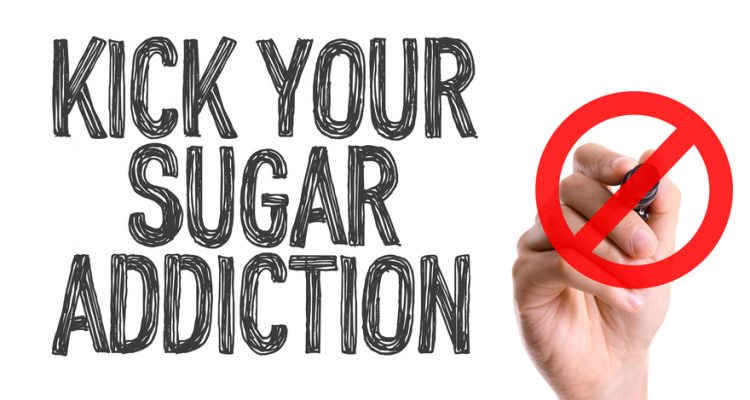The average American eats 20 teaspoons of added sugar a day. Ready to wean yourself off the white stuff? Reduce your sugar cravings with these small changes.
Most of our current sugar cravings have their roots in our childhood. “Sugar stimulates serotonin the ‘feel good’ hormone that our body makes,” explains nutritionist Michal Hertz. “It sees sugar as a reward and leaves you wanting more and more of it. The more sugar you eat the more you reinforce that positive reward, which is why it’s so difficult to break the habit of overconsumption of sugary foods and beverages.” Worse yet, because food manufacturers know this, they add sugar to many savory foods and cover up the sweet taste with salt, delivering a one-two punch to your health.
While we might not be able to bring big corporations to task (though reading this book might generate some ideas) there are a number of things we can do to help reduce our sugar cravings.
1. SLOW AND STEADY
Going cold turkey rarely works, as any drastic changes to your diet are hard to maintain. Instead, try cutting out one sweet item from your diet each week. If you’re drinking three sweetened beverages every day, try cutting out one serving the first week, two the following, and so on until you’re consuming just one every other day. Taking baby steps won’t feel like you are denying yourself and you’ll be more likely to maintain that habit.
2. EAT BALANCED AND REGULAR MEALS AND SNACKS
Eating three balanced meals a day that contain a mixture of protein, healthy fats, and fiber-loaded carbs helps control that aching sweet tooth. Waiting too long between your meals will make you likelier to reach for sugary foods that “cut” your hunger. By eating every 3 to 4 hours your sugar cravings will feel less intense and much more manageable. Also think about adding the sweet you crave to another food to make you feel more satisfied at snack time – think chocolate chips over some Greek yogurt or mixed into a handful of almonds.
3. STAY HYDRATED
Dehydration has been linked to increased food cravings. Make sure you’re drinking half of your body weight in ounces every day (If you weight 150 pounds, that should be about 75 ounces ). You can add some fruits and herbs into you water to increase satisfaction and give you a boost of flavor. Some great combinations are mint with blackberries, lemon with raspberry, strawberries with basil, or cucumber with lavender.
4. BOOST PROTEIN
Increasing your protein intake is a great way to reduce sugar cravings. High protein choices such as eggs, chicken, yogurt, nuts and beans digest more slowly and help you feel full for longer periods of time. You will also avoid experiencing sugar highs and lows since protein has a mild impact on your blood sugar. For a protein-rich dessert that will prevent sugar cravings associated with blood sugar spikes try cottage cheese with peaches, peanut butter with an apple, or yogurt with berries.
5. LOAD UP ON FIBER
Failing to replenish your bodies glycogen stores, which is energy derived from carbohydrates, can stimulate food cravings. That means that eating too few carbohydrates can actually develop blood sugar imbalances and leave you with intense cravings. Eating whole grains that are high in fiber can help beat those hankerings. Whole grains have a low glycemic index (no sugar highs and lows!), which help you feel full longer and give you more energy. Whole grains such as oatmeal, brown rice, quinoa, and air popped popcorn are also filled with more vitamins and minerals, which prevent cravings associated with nutrient deficiencies.
6. GET GOOD SLEEP AND EXERCISE
It might sound too good to be true, but just getting a good night’s sleep will help reduce sugar cravings the following day. When you’re tired, you’re less likely to show restraint when making decisions about your food, leading to bad, sugary choices. Exercise is also a key ingredient in keeping cravings in check. People who exercise regularly have more energy, lower stress levels and are better at saying no to the sweet stuff.
7. CHECK THE LABEL
Look out for sugars that go by other names on labels such as agave, brown rice syrup, high fructose corn syrup, cane juice, dextrose, molasses and sucrose. The added sugar you find in packaged foods is very different from the naturally occurring sugar in good-for-you foods like fruit. “Focus on getting sugars from natural sources such as fruits, vegetables and whole grains but don’t beat yourself up for enjoying some chocolate or candy every once in a while!”
Ready for a sugar detox? Read on:
10 Healthy Breakfast Recipes You Can Make the Night Before
3 Ancient Grains That Will Change Your Life

